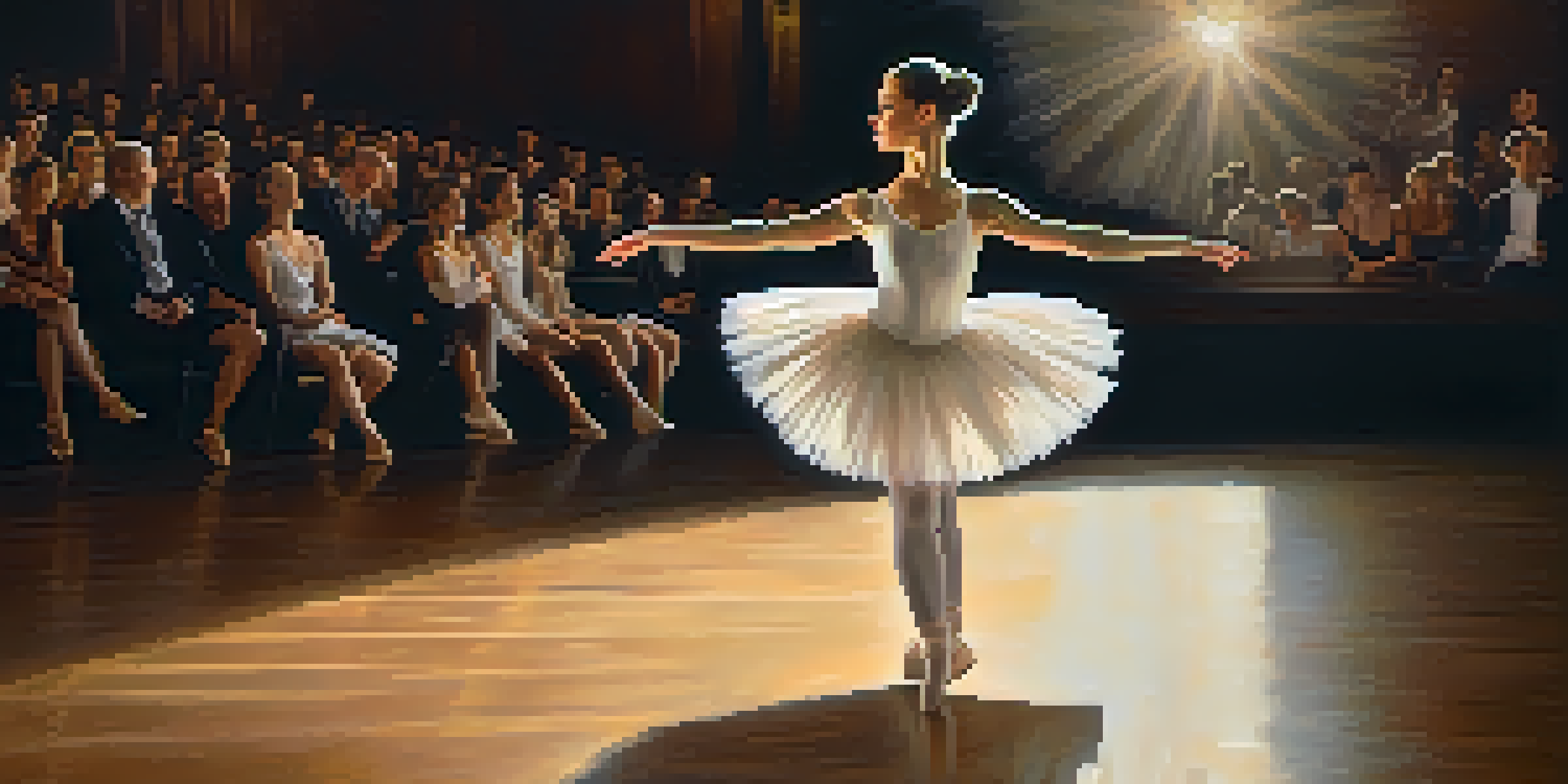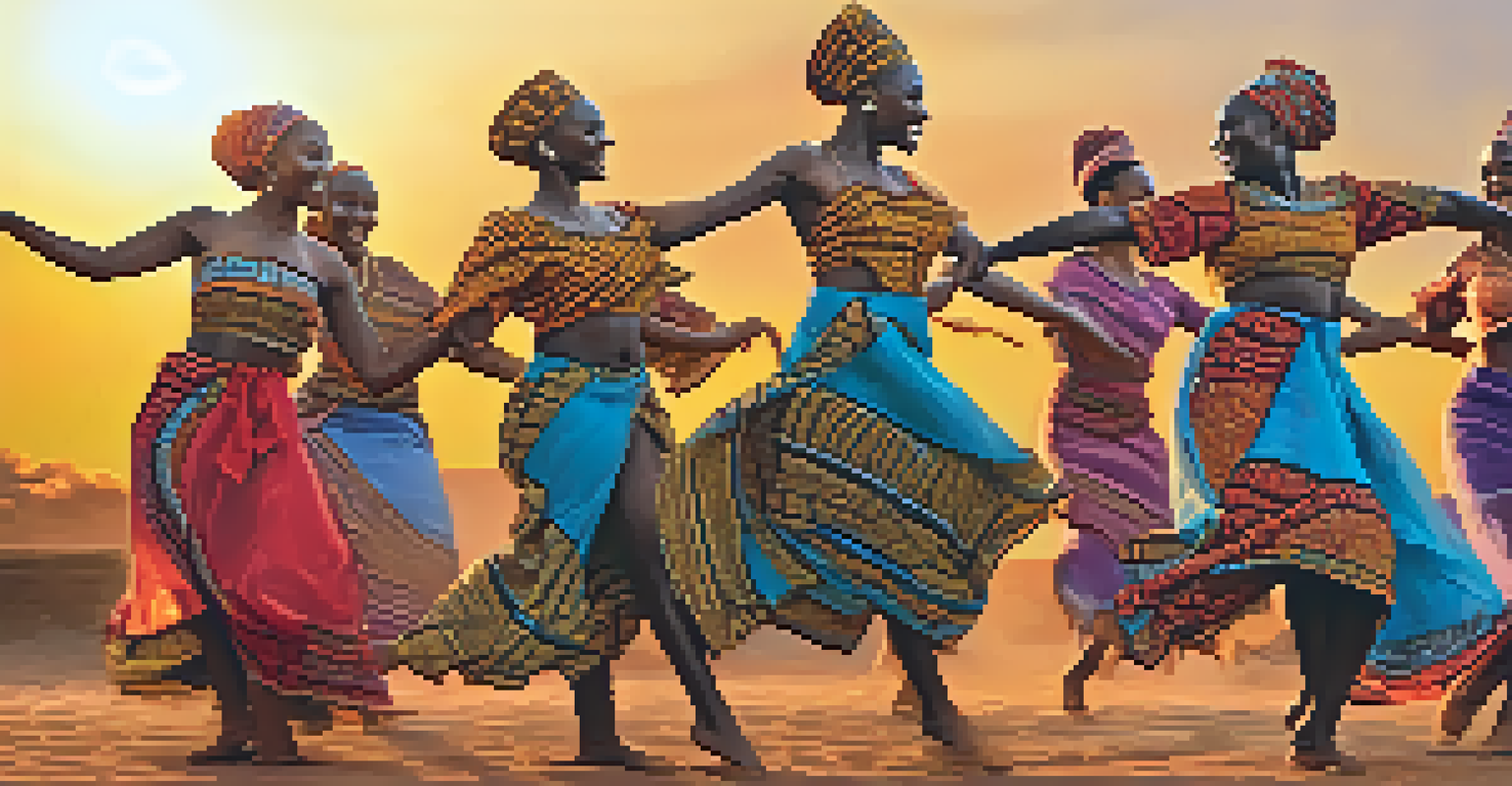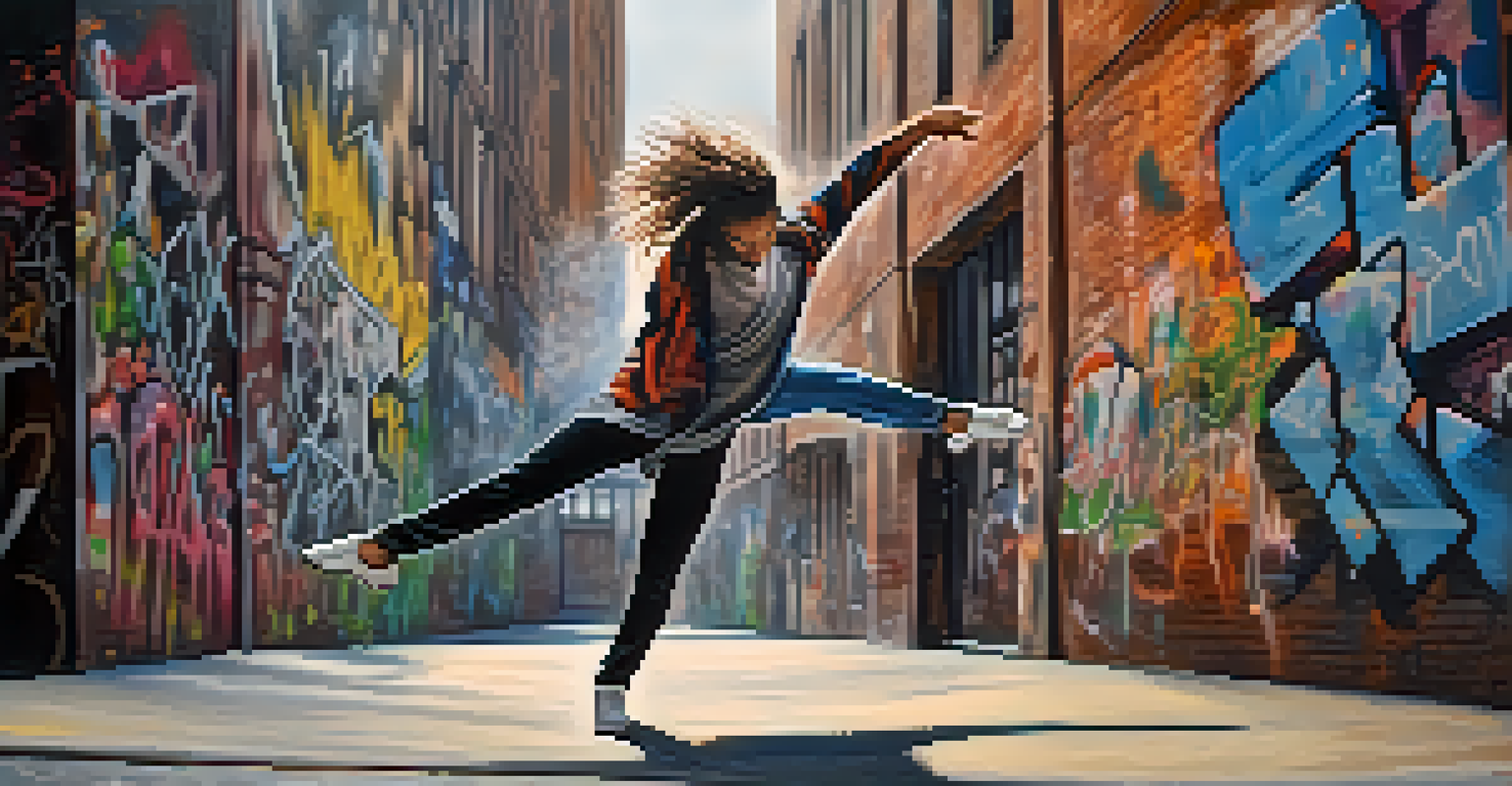Emotional Expression in Choreography: Conveying Feelings Through Dance

Understanding Emotional Expression in Dance
Dance is not just a series of movements; it’s a powerful medium for expressing emotions. Through rhythm, body language, and facial expressions, dancers convey feelings that words often fail to capture. Whether it’s joy, grief, or anger, each emotion can be depicted vividly through choreography, creating a universal language of its own.
Dance is the hidden language of the soul.
Consider how a simple sway of the hips can express happiness or how a slow, heavy movement can signify sadness. The beauty of dance lies in its ability to resonate with the audience on an emotional level, allowing them to connect with the performer’s feelings. This connection makes dance an evocative art form that transcends cultural barriers.
In essence, emotional expression in dance enriches the experience for both the dancer and the audience. It invites viewers to engage with the narrative being portrayed, fostering empathy and understanding. As we delve deeper into the world of dance, we’ll explore the various techniques dancers use to convey emotions effectively.
The Role of Body Language in Dance
Body language is a crucial element in conveying emotions through dance. Every gesture, posture, and movement tells a story, often more powerfully than spoken words. For instance, an open stance can suggest confidence and freedom, while a curled body can express vulnerability or defeat.

Dancers often utilize specific techniques to enhance their body language, such as varying the speed and intensity of movements. Fast, sharp actions can evoke excitement or anger, while slow, fluid motions can illustrate calmness or sadness. This nuanced use of body language helps to create a vivid emotional landscape that audiences can relate to.
Dance as Emotional Expression
Dance serves as a powerful medium for conveying emotions that words often cannot articulate.
Moreover, the alignment of the body with music can amplify these emotional expressions. The synchronization between a dancer's movements and the rhythm of the music creates a harmony that allows feelings to resonate even more powerfully. This synergy is what makes dance a captivating art form, capable of stirring deep emotional responses.
Music's Influence on Emotional Expression
Music serves as the heartbeat of dance, influencing how emotions are expressed through movement. The tempo, melody, and dynamics of a piece can dictate the energy and mood of a performance. For example, a lively, upbeat song can inspire joyous, energetic movements, while a slow, melancholic tune can evoke soft, reflective gestures.
To watch us dance is to hear our hearts speak.
When dancers synchronize their movements with the music, they create a cohesive emotional narrative that enhances the overall experience. The combination of music and dance can transport audiences, allowing them to feel the emotions being expressed more profoundly. This partnership between music and movement is what often makes dance performances so memorable.
Additionally, the choice of music can also reflect a dancer's personal experiences and emotions, adding another layer of depth to the performance. By selecting pieces that resonate with them, dancers can convey authentic feelings that connect with the audience, further reinforcing the emotional impact of their choreography.
Choreography: Crafting Emotional Narratives
Choreography is the art of designing dance movements to tell a story or convey specific emotions. A well-crafted piece can take the audience on an emotional journey, capturing the essence of human experiences. Choreographers often draw inspiration from personal stories, literature, or even current events to create narratives that resonate.
Through the thoughtful arrangement of movements, transitions, and formations, choreographers can evoke a wide range of feelings. For instance, a sudden change in formation might signify conflict, while a gradual build-up of movements can represent growth or healing. Each element of choreography plays a vital role in shaping the emotional landscape of the performance.
Body Language Enhances Emotion
The nuances of body language in dance play a critical role in telling a story and expressing feelings.
Moreover, effective choreography encourages dancers to tap into their own emotions and experiences, allowing for a more authentic representation of the story. This connection between the dancer and the choreography enhances the overall emotional expression, making the performance not just a display of skill but a heartfelt narrative that audiences can connect with.
The Impact of Improvisation on Emotional Expression
Improvisation in dance allows for spontaneous emotional expression, giving dancers the freedom to convey their feelings in the moment. Unlike choreographed routines, improvisation encourages dancers to respond to their emotions and surroundings, creating a raw and authentic experience. This unpredictability can lead to powerful moments that resonate deeply with the audience.
When dancers improvise, they often tap into their instincts, allowing their bodies to move in ways that reflect their current emotions. This organic flow can produce unexpected and beautiful movements, making the performance feel alive and dynamic. It’s this element of surprise that can captivate audiences, drawing them into the emotional landscape being created on stage.
Furthermore, improvisation can break down barriers between the performer and the audience. When viewers witness a dancer fully immersed in their emotions, it encourages them to connect and empathize with the performance. This shared experience enhances the emotional impact of the dance, making it a memorable and transformative moment.
Cultural Context in Emotional Expression
Cultural background plays a significant role in how emotions are expressed through dance. Different cultures have unique ways of interpreting and conveying feelings, which can shape the movements and narratives presented. For example, traditional African dance often emphasizes community and celebration, while contemporary ballet may explore themes of individual struggle and triumph.
Understanding these cultural nuances is essential for dancers and choreographers, as it allows for a deeper appreciation of the emotional layers within a performance. By incorporating cultural elements into choreography, dancers can communicate a broader range of emotions that reflect their heritage and experiences. This enriches the emotional tapestry of their work.
Cultural Context Shapes Expression
Different cultural backgrounds influence how emotions are expressed and interpreted in dance.
Moreover, when audiences engage with culturally diverse dance forms, they gain insight into different emotional landscapes, fostering empathy and connection. This exposure not only enhances the viewer's experience but also promotes a greater understanding of the rich tapestry of human emotions across cultures.
The Therapeutic Power of Dance
Dance has long been recognized for its therapeutic benefits, particularly in expressing emotions. Many individuals find that moving their bodies helps to release pent-up feelings, providing a safe outlet for emotional expression. This therapeutic aspect of dance can be particularly beneficial for those who struggle to articulate their emotions verbally.
Engaging in dance allows individuals to explore their feelings in a physical way, often leading to greater self-awareness and healing. Whether through structured classes or spontaneous movement, dance can serve as a form of self-care, helping individuals connect with their emotions and process them in a healthy manner. This emotional release can be incredibly cathartic.

Furthermore, the communal aspect of dance can also foster connections among individuals, creating a supportive environment for emotional sharing. When people come together to dance, they often find solace in the shared experience, reinforcing the idea that they are not alone in their feelings. This sense of community enhances the emotional benefits of dance, making it a powerful tool for personal growth and healing.